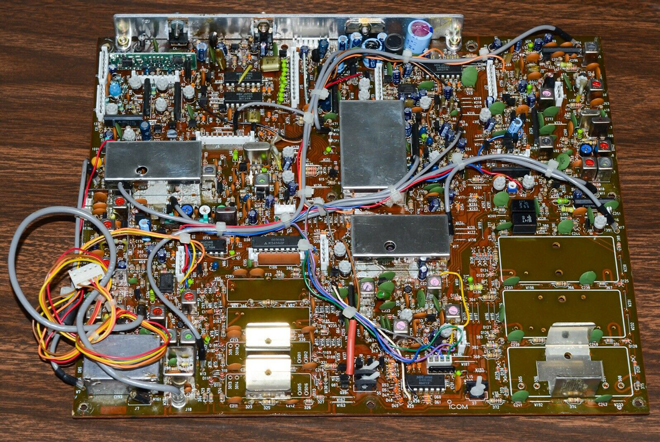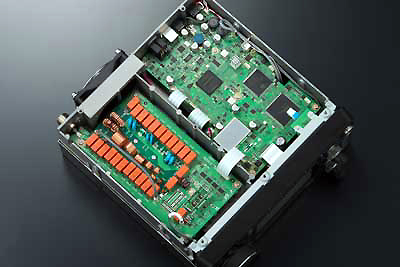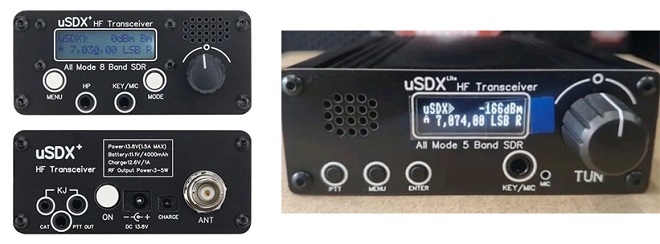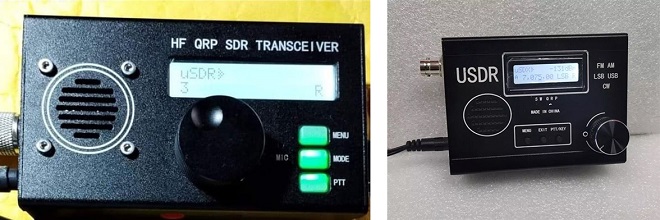From Steve's Workbench
Small wonder: The Evolution of the uSDX and other QRP transceivers
There was vigorous competition between manufacturers in recent decades to introduce amateur HF transceivers, with new models appearing almost monthly. Nowadays the new models are few and far between, but they are masterpieces of technology and design and probably better value for money than older rigs.
Portable operation has gained popularity as more hams face high-noise environments and restrictions on home antennas, or just discover the fun of operating outdoors. This growing niche is served by versatile but rather expensive low-power rigs from ICOM, Yaesu, and Elecraft, and less expensive ones from small companies in Europe and China. If a new portable transceiver is priced under US$600 and gets good reviews, it will attract much interest.
With this background, there was excitement among QRP fans when information leaked out about a transceiver called the uSDX (micro Software Defined Xcvr). It was pocket-sized with 5 watts output on SSB/digital and CW, covered most HF bands, and would be very cheap. I already had two QRP radios but I couldn’t resist buying a uSDX, and then another one. These are interesting radios, to say the least, and here is the story:

Figure 1. My SOTA QRP radios: The newer “red corner” uSDX, a QCX40 (left), and a KD1JV Tribander (rear).
Like a living creature, the uSDX evolved from older technologies, and was accelerated by a major mutation in the form of software-derived signal processing. Some ancestral “genes” have become obsolete because of this technology disruption. Like higher mammals, different-looking ones have much in common under the skin. It is not the most highly evolved QRP transceiver, but it is clever, capable, rugged, and cheap enough to be replaced if it falls off a mountain.
The mighty QCX. One of its “parents” was the QRPLabs QCX, a single-band CW-only transceiver that was released in kit form in 2017. Over 18,000 QCX kits have been sold to date, thanks to many unique features, impressive performance, excellent manual and support, and a price of only $49, That is quite an accomplishment for a one-man company, but may yet be overtaken by the new QDX, a tiny multi-band FT8-only transceiver.
The QCX receiver is direct conversion utilizing the Tayloe detector front-end found in some high-performance radios. (The old regenerative and some other receiver circuits also directly reproduced the “baseband” audio modulation of the RF signal.) In a modern CW receiver using a Tayloe detector, two out-of-phase baseband signals are produced and a phase shift network cancels the unwanted sideband. In the QCX, the next audio stages provide high gain and selectivity (Figure 2). A microprocessor controls receive and transmit functions, and many others that the designer, Hans Summers G0UPL, squeezed into its small memory. It uses a very efficient Class E final amplifier stage with inexpensive MOSFET transistors, seen in experimental QRP designs but not in commercial radios. All parts in the original version were contained on a single small circuit board (Figure 3). Its software has been updated several times, but remains proprietary.

Figure 2. Block diagram of the QCX transceiver

Figure 3. All controls and external connectors are on the original QCX circuit board, even a microswitch for a key. The microprocessor is under the LCD display module.
R.I.P. Superheterodyne 1920-2020. The price and performance of the QCX are not all that made it a landmark. No traditional superheterodyne HF radios had been released by the main manufacturers for several years, and the QCX was another sign that the hallowed design was obsolete. (The Yaesu FTDX101 is a hybrid using down-conversion followed by digital signal processing, but ICOM’s immensely popular IC-7300 and the high-end IC-7610 use direct sampling, digitizing RF signals and processing them with a FPGA as seen in Figure 4.) This trend in radio design is motivated by lower production cost and made possible by high performance, mass-produced ICs. With digital control and a user-friendly interface in firmware, there is no need for large circuit boards and expensive discrete components. A comparison (Figures 5a/b) of the main board of a 1990’s transceiver and that of the IC-7300 makes this obvious.

Figure 4. IC-7300, a direct-sampling software-defined radio (SDR)

Figure 5a. A 1990’s superheterodyne main board (no ATU)

Figure 5b. IC-7300 main board with the internal ATU
Portable operators often use several bands and modes, so the QCX has competitors in that niche. Some full superhet QRP radios like the Yaesu FT-818 are still popular, as are scaled-down superhets as used in the LDG Mountain-Topper, KD1JV Tribander and several other CW-only SOTA radios. These use SA612 or similar “radio on a chip” ICs as mixer and demodulator, a direct digital synthesis (DDS) IC for the local oscillator, a crystal IF filter and some audio amplifier chips (Figure 6). On transmit the DDS is switched to the output frequency and feeds a MOSFET PA, with a microprocessor managing all functions. They have a loyal following because of light weight, long battery life, and multiple band coverage, but they remain relatively expensive.

Figure 6. Basic SSB and CW superheterodyne
Another radio in the uSDX family tree is the uBITx, a superhet design from India that was sold as an inexpensive kit. It was not as popular as the QCX because a fair amount of user knowledge was required to modify it, and originally lacked multi-band and even CW capability. It was a significant predecessor of the uSDX, because unlike the QCX the software was open-source. This meant that experimenters could publish the changes they made in the basic design, both for the circuitry and for the software used to control it. A community of developers shared experimental results, and several updated versions of the kit have been produced.
Enter the uSDX: Two European amateurs (DL2MAN and PE1NNZ) believed the QCX could be turned into an SSB radio and took it on as a hobbyist challenge, giving it a new name. They developed new software for the ATMEGA328P microprocessor, making room for it by removing some “heavy” QCX functions. Other interested hams contributed to the open-source experiment via an online forum. With its new software, the microprocessor was barely up to the task of quality SSB, but breadboarding demonstrated that it was feasible, and improvements could be documented and tested quickly. The goal was to keep the look and feel of the QCX,but the approach used to generate and demodulate SSB was new for amateur transceivers. The end product actually has very little in common with the QCX except for size, power output, and parts of its menu. It has multi-band and SSB capability at a much lower price than transceivers with similar specifications, and since its birth it is either loved, hated, or just controversial.
Understanding how SSB is generated and demodulated by software involves advanced mathematics based on the Hilbert Transform. The math is already coded into existing microprocessor routines, so it is “only” necessary to use efficient commands to generate and demodulate SSB. The Hilbert transform is related to the Fourier transform, which changes an analog signal (e.g., audio) that varies in time into a new signal in the frequency domain. The Hilbert transform mathematically represents the multiplied RF carrier and information signals. An online article gives a much better summary of how it works:
https://www.mathworks.com/help/signal/ug/single-sideband-modulation-via-the-hilbert-transform.html
The uSDX transmitter is implemented almost entirely in software (Figure 7). The hard-working ATMEGA328P samples the input audio and reconstructs an SSB signal by controlling the SI5351A phase-lock loop through tiny frequency changes, and controlling the PA power by pulse-width modulation of the keying circuit. The PWM class-E design is much trickier than the usual class-C and linear modes, but keeps the SSB transceiver small, cool, power-efficient and low-cost.
For the receiver, the microprocessor implements a Tayloe detector, a 90-degree phase shift circuit, a CW/SSB filter circuit, and the audio amplifier circuit. This has advantages over an analog approach such as no need for an I/Q alignment procedure as in the QCX, adjustable IF digital signal processing (DSP), filters, AGC, noise-reducing DSP signal conditioning, and two independent attenuators in the analog front-end. A digital mixer with a narrow low-pass window, combined with an ADC (analog-to-digital converter) provides gain, dynamic range and alias rejection for handling weak and strong signals. This approach also results in a low parts count and simple board layout, with room left for multiple bandpass filters (figures 8 and 9).

Figure 9. The low parts count makes it easy to build and copy. The PA transistors and bandpass filters are near the upper edge of the board.
Clones, clones, clones. The slow leak of information while the hardware and software were still under development resulted in a new phenomenon. Several Chinese manufacturers, some no larger than their family kitchen table, noticed the growing interest and started making and selling uSDX “clones”. By rearranging the circuit board and case and with free access to updated software, cheap components and simple layout yielded a half-dozen versions in the $100-$150 price range. These were complete (minus documentation) and ready to go on the air. Several clones are shown in Figures 10a-d, and my “red-corner” version is in Figure 1.


Figure 10a-d Some clones now on the market. Note that CAT control is possible.
A frequent complaint about the uSDX clones was poor SSB audio quality and distorted receive audio. This was in part due to the marginal processing speed and compounded by the low-quality microphones supplied. Poor documentation left users unaware that menu adjustments were usually necessary, including PA PWM parameters. Nevertheless, there are many videos of the clones making clear SSB QSOs over impressive distances. This is a case of YMMV (“your mileage may vary”), because unquestionably some defective clones were sold.
After the small learning curve, I was happy with my clones because I operate CW only while portable. CW keying and break-in are smooth, the receiver is almost as sensitive and selective as my IC-7300, and even the CW decoder works well. The “red-corner” version in Figure 1 can display power output and SWR, very convenient for tuning a magloop antenna or ATU. The internal battery is good for several hours of operation or an external 15-volt battery gives 5 to 12 watts output. I often use it with my home antennas just for QRP fun, and it has been 100% reliable despite my abusing it with high SWR.
But it is not an enjoyable radio to use. It illustrates the gap between good specifications and a good human interface. Important basic functions like volume control, AGC, filters, attenuators, and keyer speed require both menu button and encoder actions. The tuning encoder on my second clone operated opposite to the first one – frustrating! The menu is based on the QCX but is less user-friendly (Figure 11). By comparison, my KD1JV Tribander is a pleasure to operate, with all controls on the front panel or available with one button push. Some uSDX software improvements are available and hopefully clone manufacturers will be motivated to use these as the competition grows.

Figure 12. “True” uSDX and its printed case.
The (tr)uSDX. The uSDX software, circuit, and board graphics were all open-source from the beginning, and though the original developers had no legal rights to it, they did not appreciate having their design copied so others could profit. Some spice was added to the story when DL2MAN made videos showing poor harmonic suppression and other defects of the Chinese clones. He then launched an “authorized” version which he called (tr)uSDX, the true uSDX. Not all clone users agreed with this thinking and some harsh online exchanges were made. By then Hans Summers was very glad he never made the QCX software open-source, as requested by some QRPLabs customers.
The fuss died down and an anti-clone community organized itself to provide good quality (tr)uSDX kits, instructions, printed cases, and the latest software. For COVID-logistical reasons this was short-lived, and now a European and a Chinese distributor have been designated to supply kits and finished versions of the (tr)uSDX. If the case is included, the authorized multi-band versions cost a little more than most clones, but small size and good performance have made them popular.
In conclusion, the uSDX is a high-performance but still experimental transceiver. In my opinion it is good value at 1/10 to 1/3 the price of other portables. If this fits your needs*, it might be worth a try.
*The legal status of the uSDX and kit radios is not clear in the Japanese licensing system.
From Steve's Workbench backnumber
- Another SOTA antenna, and some thoughts on antenna efficiency
- The Versatile Vertical Delta Loop
- An improved portable Magnetic Loop “Magloop” Antenna
- Small wonder: The Evolution of the uSDX and other QRP transceivers
- I learned about relays by rebuilding some Workbench projects
- Cheap but effective satellite antennas – Part 2: Directional antennas
- Cheap but effective satellite antennas – Part 1: Omnidirectionals
- 18/24 MHz rotatable dipole,“Random-length”, end-fed, multiband antenna
- My shack was a jungle of cables! The solution was a remote antenna switching system.
- Remote Antenna Tuners – Part 2 – Designing, Building, and Testing a Remote Antenna Matching Unit
- Remote Antenna Tuners – Part 1 – Why Use A Remote Antenna “Tuner”






